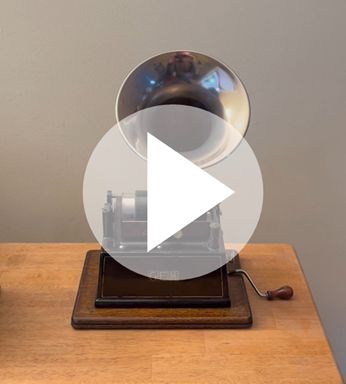Gramophone Reproduction
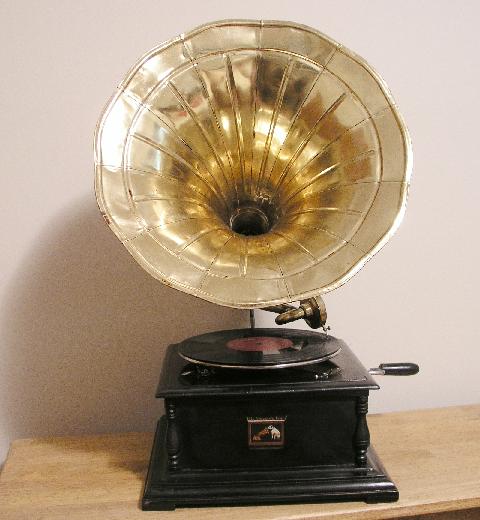
This is an wind-up table-top phonograph manufactured by The Gramophone Company, Ltd. I believe the phonograph was made in England as one of the two records says The Gramophone Company is "incorporated in England with limited liability." This phonograph probably came from India because the record lists the Gramophone Company in Dum Dum, India as the manufacturer and the music on this record is Indian music. This is a reproduction of the classic wind-up gramophone with the "morning glory" horn where the sound exits. The gramophone plays standard 78 rpm records with horizontal modulation. On the front of the gramophone is a decal showing the classic image of a dog listening to "His Master's Voice." This decal is shown below.
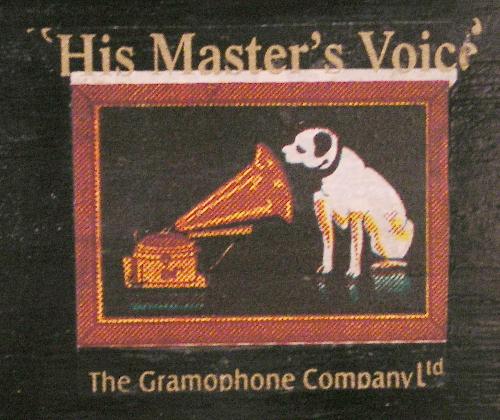
Below is a side view of the gramophone.
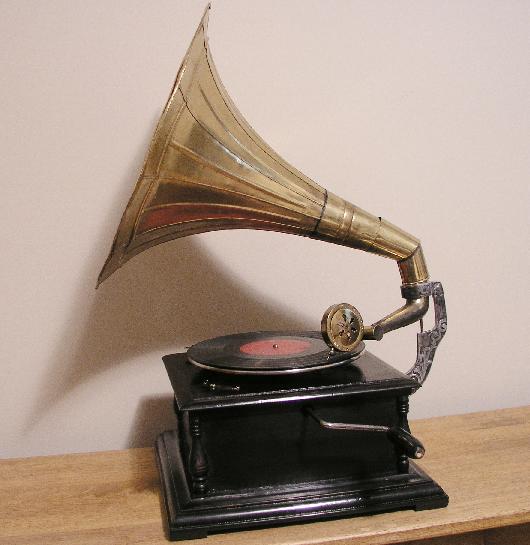
The needles are metal and can be easily broken. The reproducer mounted at the end of the tone arm and produces sound from the needle movement. The sound is transmitted down the tone arm and exits through the "morning glory" horn. A close-up view of the needle and reproducer is shown below.
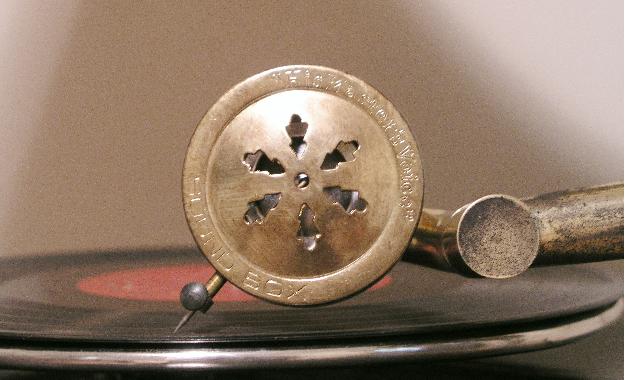
The reproducer has the words "Sound Box" stamped aroound the lower portion and ""His Master's Voice"" stamped around the upper portion. The tonal quality is reasonable with reproduction of some musical instruments, especially horns, fairly accurate. Speed of the turntable will vary with the pressure imposed by the spring that is wound up using the crank on the left-hand side of the wood cabinet. Speed regulation is accomplished with an adjustable lever that has a leather pad that presses against the turnable. The lever is shown below.
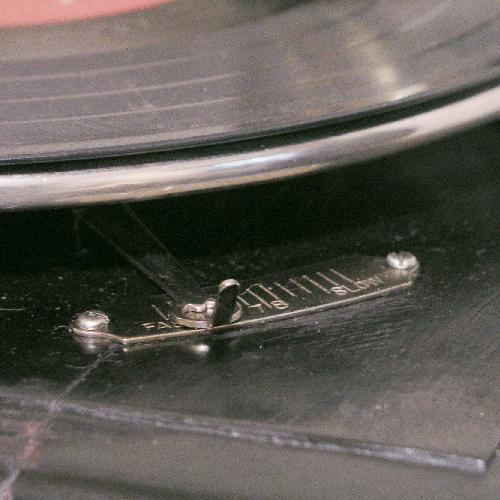
Below is a picture of the under side of the player deck. The spring is enclosed and is at the rear of the mechanizm. In the front, you can see the governor that maintains a constant speed. The governor comprises small disk weights attached to horizontal bands. As the speed increases, the weights cause the bands to bend outward and the centrifical force causes the rotational speed to slow. The speed regualtor on the top of the deck shown in the previous picture moves a pad to press against a small flywheel adding friction to slow down the rotational speed. You can see the pad and flywheel in the center of the picture. The vertical shaft on the left turns the turntable. The shaft is driven by a worm gear attached to the flywheel and governor shaft.
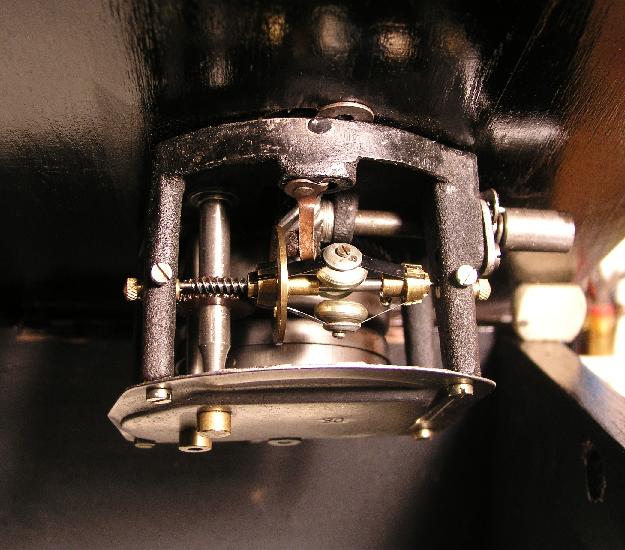
I also have a ceramic display that I acquired along with the Gramophone. It is shown below.
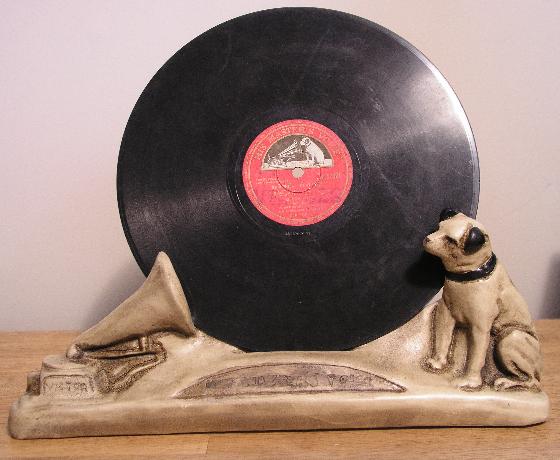
Notice that it has the dog on one end and the Gramophone on the other end. The display holds one record. The phrase "His Master's Voice" is engraved below the record.
Model VV-VI Phonograph
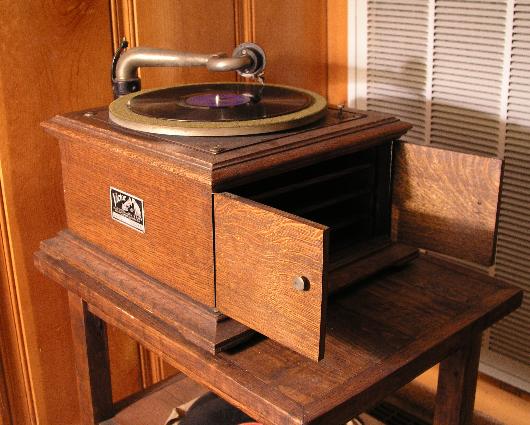
This is an antique wind-up table-top phonograph, Model VV-VI, manufactured by Victor Talking Machine Company of Camden, NJ. Note the metal tag on the side with the dog, "Nipper," listening to "His Master's Voice" on a phonograph. This phonograph plays the standard 78 rpm records with horizontal modulation. The needles are metal and can be easily broken. The reproducer mounted in the circular portion at the front of the tone arm produce sound from the needle movement. The sound is transmitted down the tone arm and exits the phonograph through the door opening below the turntable. The tonal quality is reasonable with reproduction of some musical instruments, especially horns, fairly accurate. Speed of the turntable will vary with the pressure imposed by the spring that is wound up using the crank on the right hand side. Speed regulation is accomplished with an adjustable pad that has a leather pad that presses against the turnable. The pressure of this pad is adjustable with a thumb screw on top.
Below are other views of this phonograph.
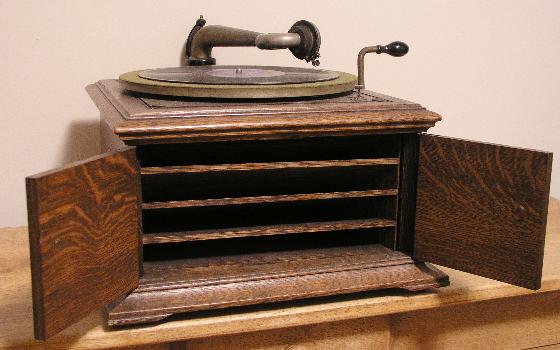
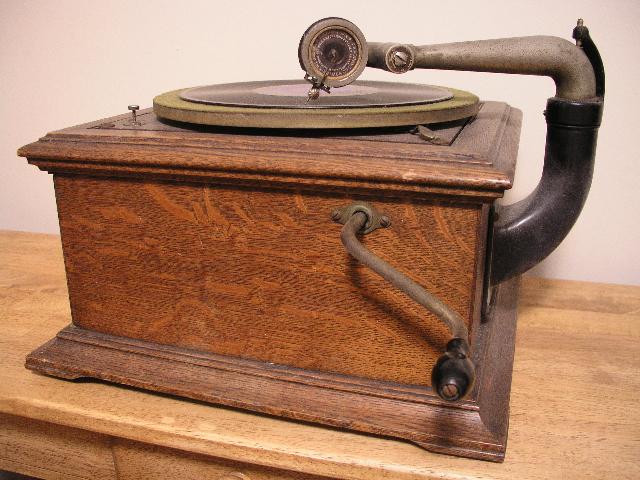
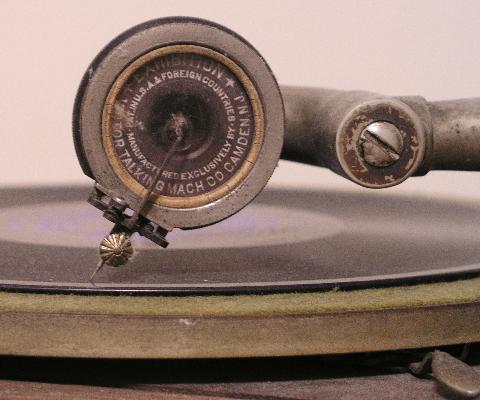
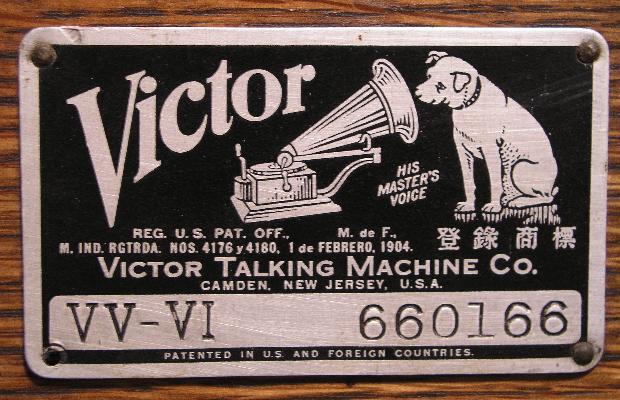
Edison Amberola Model DX Cylinder Phonograph
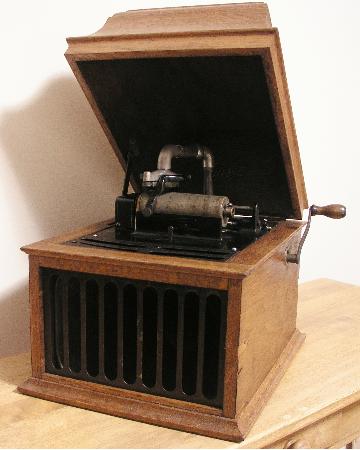
This is an Edison DX Phonograph that plays the Four Minute Blue Amberol Cylinder Records. I understand it is somewhat hard to find. I am told it was in production for only about the last six months of 1914 and was the last and best of the Amberola "X" table top phonographs. It was also the last belt-driven Amberola Model to be sold by Edison. Previous "X" models were made up of parts from obsolete external horn phonographs, including the "Fireside" and the "GEM". The Amberola DX was the only X Series model to have a Fireside spring motor. Previous X models were powered by the noisier and under powered GEM motor. The phonograph has be refinished on the external surfaces, but the internal finish is untouched and the original "Edison" decal inside the lid is in tact. This phonograph is in excellent playing condition.
The records are cylinder-shaped with the groove engraved around the exterior of the cylinder. The records use vertical modulation as opposed to the horizontal modulation used in the Victor phonograph above and all modern phonographs. The crank to wind the spring is on the left side of the phonograph. The reproducer sits on top of the cylinder record. A "sound pipe" transfers the sound from the reproducer over to the neck of the horn at the back of the phonograph. The neck routes the sound down below the player deck and the sound emits out the front of the phonograph through the horn flare below the player deck.
The reproducer has a "needle" that sits in the record groove. However, the needle is not dragged across the record as with modern phonographs. With the Edison phonograph, there is a fine-pitch lead screw that pulls the reproducer across the record. (You can see this lead screw beneath the name plate in the picture below) This process will produce less pressure, and less wear, on the grooves since the reproducer is somewhat heavy.
The picture below shows the name plate for the phonograph. Note that the patent dates are October 27, 1896 and May 31, 1898.
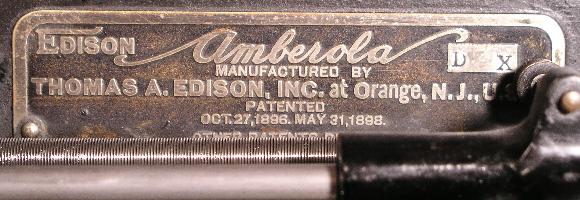
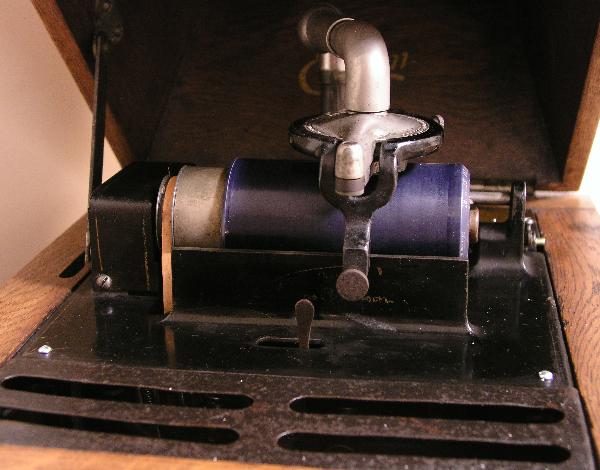
Below is a picture of a cylinder and the box in which it came. The top of the box is missing.
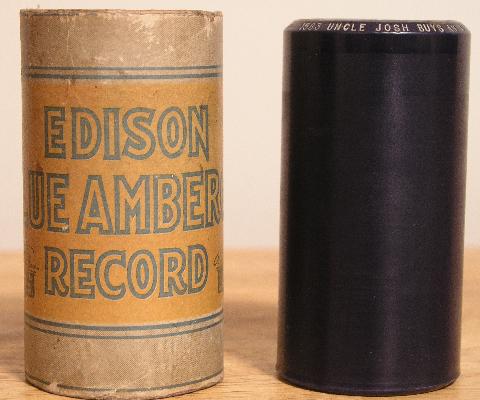
The picture below shows the top of the reproducer. The sound comes out the round hole in the center.
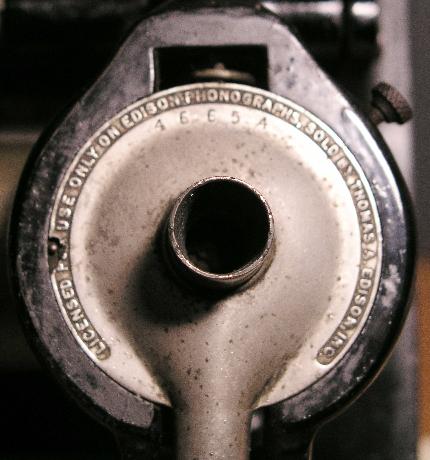
The phonograph is belt-driven using a leather belt. Below are two pictures of the under side of the player deck. You can see the leather belt on the left of the picture below and at the top of these pictures, you can see the governor that maintains a constant speed.
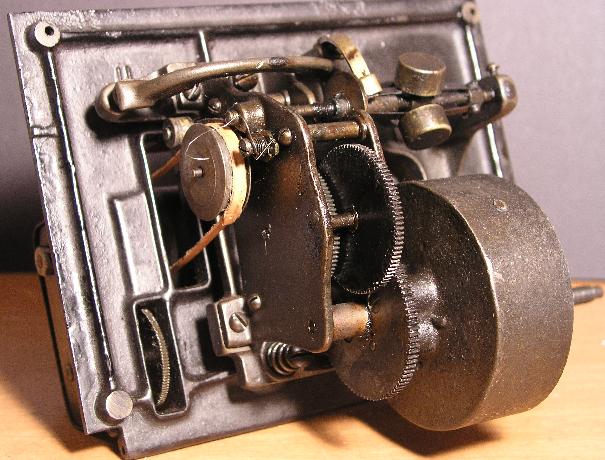
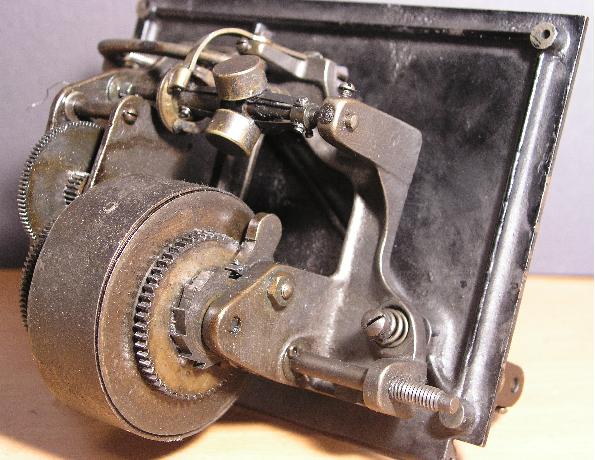
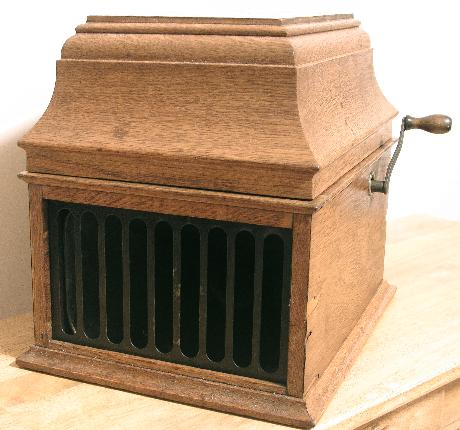
Edison GEM Cylinder Phonograph
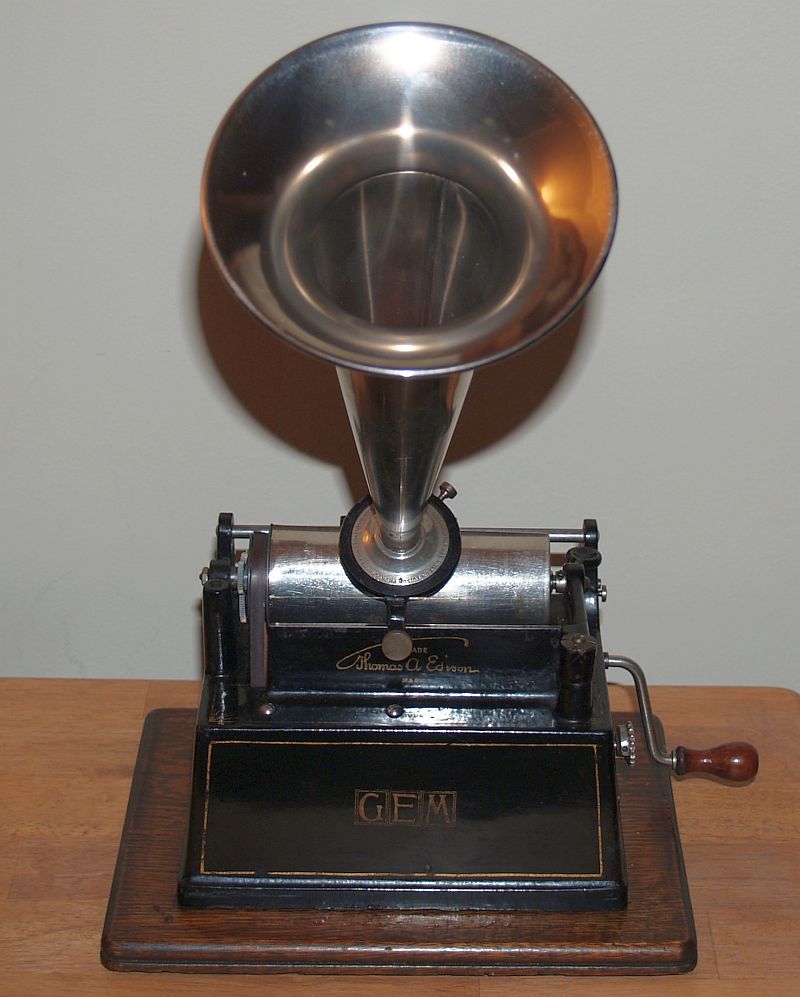
This is an Edison GEM Phonograph that plays the two-minute cylinder records. The nickel-plated horn and crank are detachable so that a curved top can be placed over the phonograph for storage and transportation. This configuration is shown in the picture below.
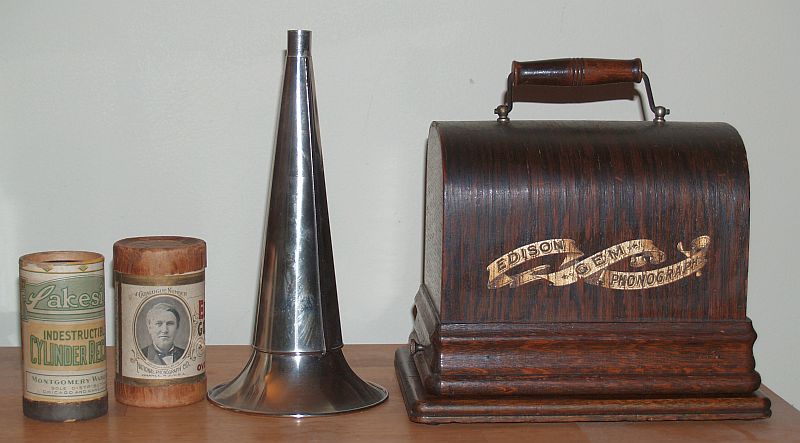
Beside the phonograph are two, two-minute records in thier original cases. The record on the right was manufactured by Edison. The one on the left was sold by Montgomery Ward under the "Lakeside" brand. Whereas the Edison cylinders can be susceptible to mold and other damaging effects, the Lakeside cylinders claim they never wear out and are unaffected by any climate - wet or dry, hot or cold. Below is a video of the Lakeside cylinder playing on the phonograph. The record is #484 entitled "I'd Love to Live in Loveland Song." Click on the image to hear the record playing.
